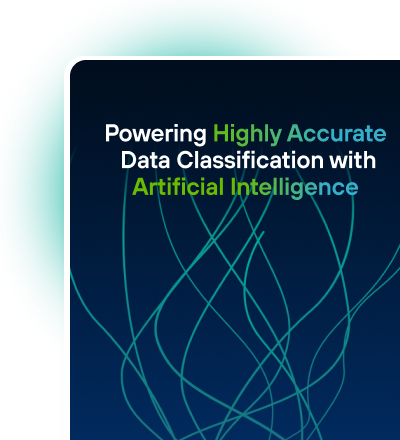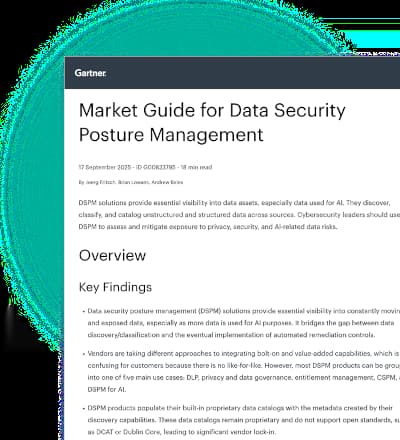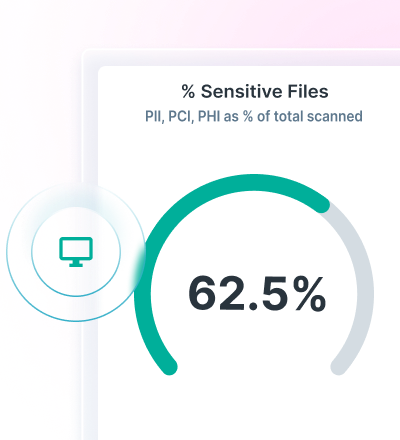
Mais de 12 mil clientes não poderiam estar errados










































Tenha Visibilidade e Controle sobre Dados Confidenciais
Dê visibilidade aos dados obscuros com uma descoberta de dados extensiva e classificação de alta precisão.
O software Forcepoint DSPM faz a varredura de qualquer fonte de dados e usa a tecnologia proprietária de AI Mesh para identificar, categorizar e corrigir dados de alto risco.
É uma solução perfeita se suas equipes de segurança enfrentarem dificuldades com:
Grandes quantidades de dados invisíveis
Dados com excesso de permissões
Riscos de vazamento de dados de GenAI
Locais de dados não identificados
Forcepoint DSPM Software Leads the Pack
Forcepoint is the only Data Security Posture Management vendor that uses AI Mesh technology to deliver highly accurate data classification. Read the full comparison chart to learn why organizations trust the leading data security provider to discover and catalogue data and remediate risk at scale.
20%
40%
60%
80%
100%
Forcepoint
Traditional Vendor
Data Governance
Vendors
Solução Forcepoint DSPM Comparada à Concorrência
Forcepoint | Fornecedor Tradicional | Fornecedor de Governança de Dados | |
Classificação de dados
| |||
Descoberta de dados
| |||
Escalabilidade
| |||
Conjunto para análises:
| |||
Análise de incidentes
| |||
Personalização e extensibilidade
| |||
Abordagem baseada em risco
|
A comparação de produtos é baseada nas capacidades do produto e nas integrações entre portfólios disponibilizadas pelo mesmo fornecedor a partir de 7 de maio de 2024. As comparações não incluem integrações com fornecedores terceirizados. A comparação de funcionalidades é baseada na versão mais recente e moderna de cada fornecedor, disponível a partir de 7 de maio de 2024. As informações são baseadas em dados coletados de sites e fóruns públicos, artigos de analistas e fichas de dados de produtos disponíveis a partir de 7 de maio de 2024.
Por que o Forcepoint DSPM é uma ferramenta de segurança de ponta
Aprimore a Data Visibility
Ganhe visibilidade completa de dados estruturados e não estruturados em ambientes de nuvem e on-premises para rastrear e gerenciar dados confidenciais onde quer que eles residam.
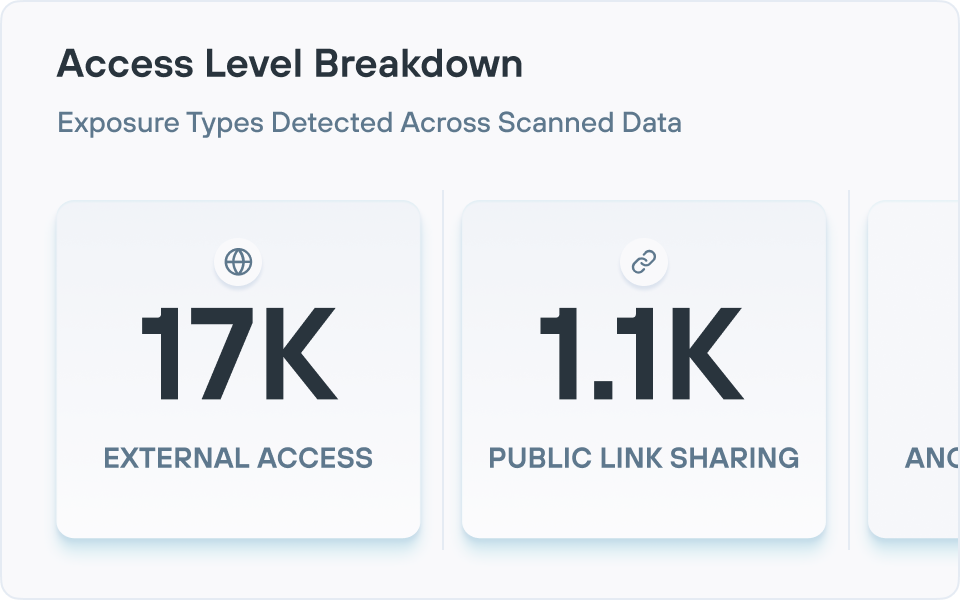
Descubra e Classifique com IA
Utilize a tecnologia AI Mesh altamente precisa para descoberta e classificação de dados eficientes e confiáveis, reduzindo falsos positivos e aprimorando a precisão de alertas de incidentes
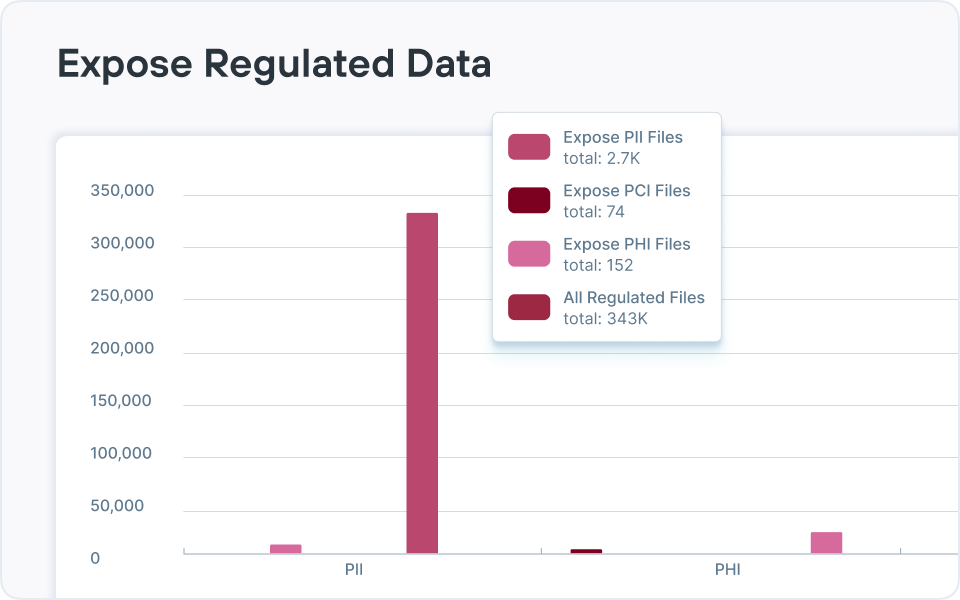
Corrija Riscos Proativamente
Insights práticos permitem gerenciar permissões, mover dados mal localizados e resolver problemas de soberania, acesso e dados duplicados ou ROT.
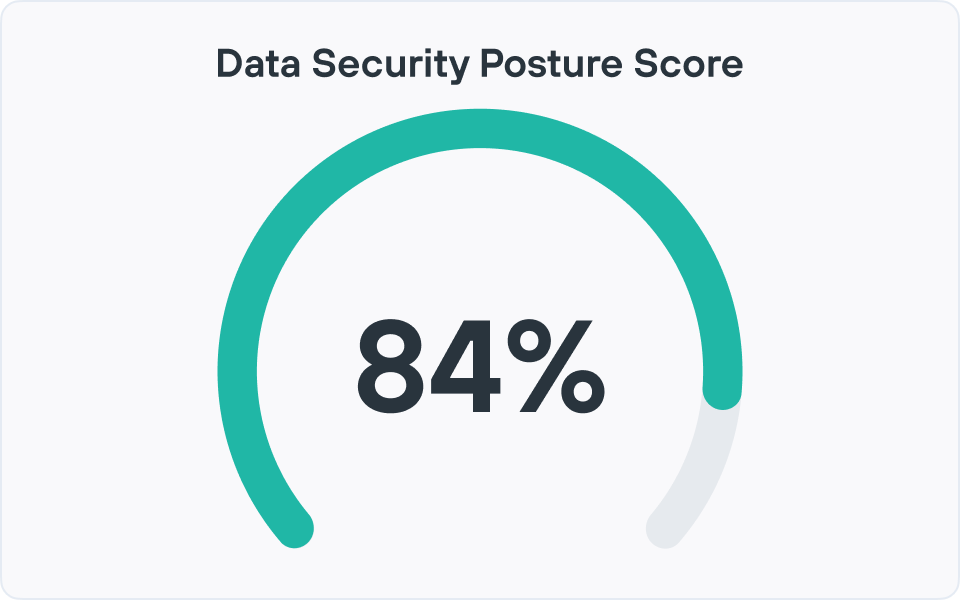
Automatize o Gerenciamento da Conformidade
Simplifique os processos de conformidade com automação para garantir um alinhamento consistente e contínuo com regulamentos em evolução, reduzindo o esforço manual.
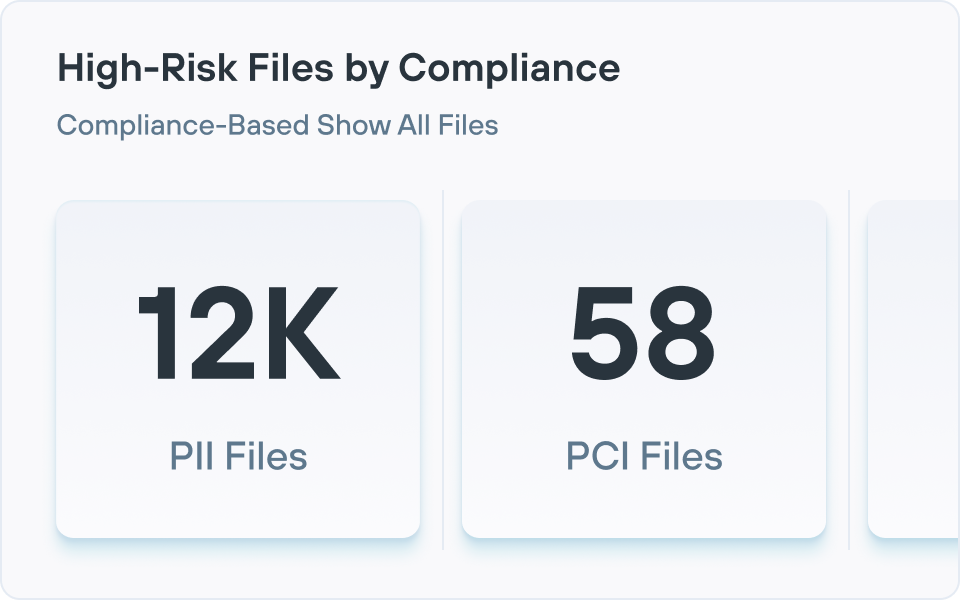


Precisão e relatórios transparentes
Enda Kyne, Diretor de Operações da FBD Insurance, diz que o DSPM e o DDR foram adotados por suas equipes de segurança de TI e proteção de dados por sua capacidade de controlar dados críticos e relatar atividades para os reguladores.
Strengthen Your Data Security Posture


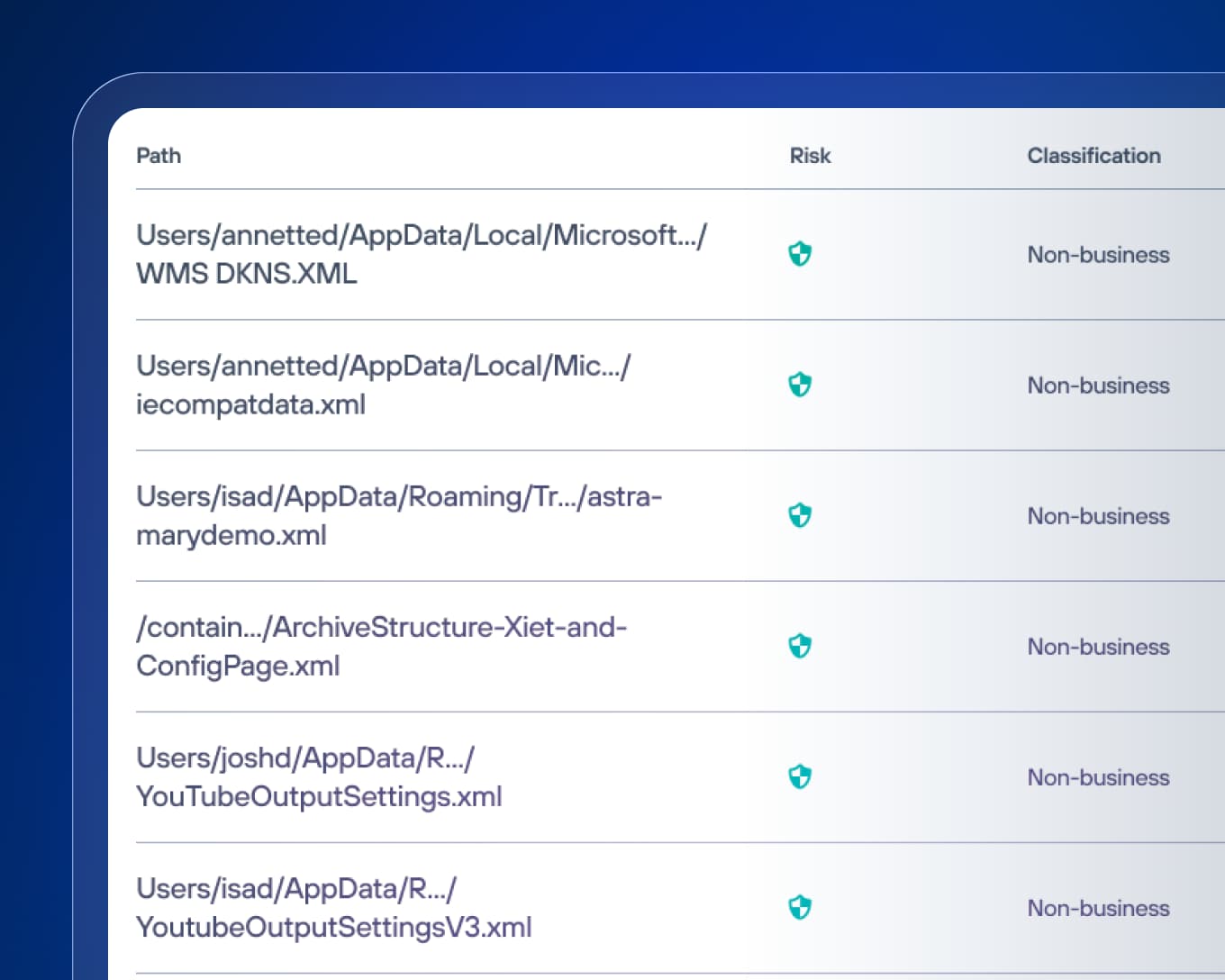

Rapidly and precisely identify sensitive data-at-rest with AI Mesh technology that fine-tunes its classification accuracy relative to your unique organizational needs.

Extend visibility and control over all your regulated data, eliminate gaps and generate automated reports to demonstrate compliance.

Gain a centralized view of your data and enforce the Principle of Least Privilege across cloud, SaaS and on-prem systems for effective governance.


Seus dados estão em risco?
Um data risk assessment descobre proativamente as ameaças aos seus dados, como arquivos confidenciais revelados ou usuários com excesso de permissões. Solicite um dta risk assessment gratuito com a Forcepoint para ver o DSPM em ação e saber o nível de segurança dos seus dados.

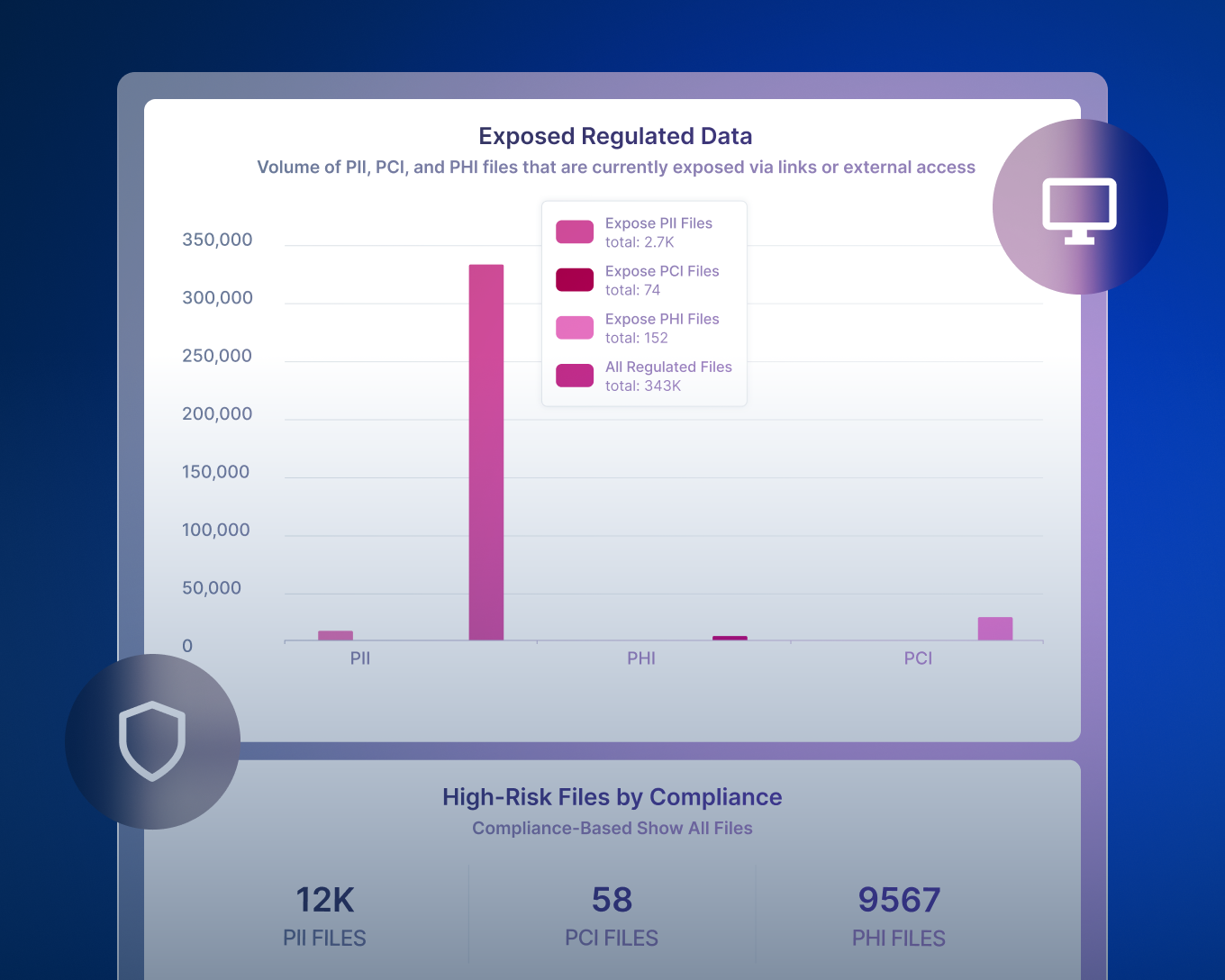


Capacidade de integrar DLP, DSPM e DDR para descoberta, classificação, proteção e correção de dados.

Fornece relatórios de riscos eficazes, permitindo que você veja dados ROT (redundantes, obsoletos, triviais), dados com excesso de permissões, problemas de soberania de dados e muitos outros que tornam a postura geral dos dados arriscada.

Oferece visibilidade e controle da prontidão de dados para todos as aplicações de GenAI. Também é capaz de proteger o uso do Copilot e do ChatGPT Enterprise.
Depoimentos de nossos clientes
Depoimentos de nossos clientes
"As part of Forcepoint’s broader data security ecosystem, DSPM has integrated seamlessly with our existing solutions. It’s an essential component of our overall data security strategy."
Indonesia Financial Group (IFG)
Recomendada por especialistas.
Aprovada pelos usuários.
A Forcepoint é consistentemente classificada entre os principais fornecedores de software de prevenção contra perda de dados e softwares de segurança de dados por usuários e analistas do setor.
A Forcepoint foi reconhecida como Líder no IDC MarketScape: Worldwide DLP 2025 Vendor Assessment.
A Forcepoint foi nomeada a Empresa Global do Ano de DLP em 2024 pelo segundo ano consecutivo pela Frost & Sullivan.
Forcepoint reconhecida como Strong Performer no relatório The Forrester Wave™: Data Security Platforms, Q1/2025.
Implemente as Práticas Recomendadas do Data Security Posture Management
Perguntas frequentes
O que é o Data Security Posture Management (DSPM)?
O Data Security Posture Management é uma solução de segurança que descobre continuamente onde os dados confidenciais residem, como eles são classificados e quem pode acessá-los em ambientes de nuvem, SaaS e on-premises.
O DSPM nativo de IA da Forcepoint segue esse mesmo modelo: ele inventaria continuamente dados estruturados e não estruturados, usa a tecnologia AI Mesh para classificar esses dados com precisão em armazenamento de arquivos, aplicativos de nuvem e locais on-premises e avalia se algum desses dados está em risco por meio de uma variedade de lentes.
O Forcepoint DSPM ajuda a aumentar a produtividade, cortar custos, reduzir riscos e simplificar a conformidade, transformando a postura de uma auditoria periódica em uma visão ao vivo do risco de dados.
Como as soluções de DSPM funcionam?
A maioria das plataformas de DSPM segue um ciclo de vida recorrente: descubra dados (estruturados e não estruturados em várias nuvens e on-premises), classifique-os por sensibilidade e contexto de negócios, avalie e priorize riscos (como acesso com excesso de privilégios ou dados localizados incorretamente), remedie configurações incorretas ou acesso inseguro e, em seguida, monitore continuamente para manter a postura atualizada.
O Forcepoint DSPM implementa isso com o AI Mesh, uma arquitetura de classificação de IA que usa modelos de linguagem pequenos e redes neurais profundas. O Forcepoint DSPM verificará fontes de dados integradas, identificará e categorizará dados de alto risco e recomendará os próximos passos para remediação para que a equipe possa ajustar permissões, mover dados mal colocados, limpar dados Redundantes, Obsoletos ou Triviais (ROT) e corrigir problemas de soberania, em vez de se limitar aos relatórios.
Atualizações recentes estendem o Forcepoint DSPM além de arquivos em bancos de dados corporativos e data lakes, de modo que o mesmo modelo de descoberta, classificação e aplicação adaptativa agora abrange dados estruturados e não estruturados em uma única plataforma unificada, juntamente com o Forcepoint DDR e DLP.
Como os recursos de descoberta de dados do software de DSPM funcionam?
O DSPM descobre continuamente os dados na nuvem, na rede e no armazenamento on-premise para descobrir e catalogar todos os dados que sua organização possui. Encontrar dados confidenciais é o primeiro passo crucial para protegê-los. As soluções de DSPM examinam todo o seu ecossistema de dados, como:
- Plataformas de nuvem (AWS, Azure, GCP)
- Aplicativos SaaS (Microsoft 365, Salesforce)
- Armazenamento e bancos de dados no local
O moderno software de DSPM mantém visibilidade contínua à medida que os dados se movem e mudam por meio de funcionalidade integrada ou integrações de soluções.
Quais capacidades de classificação de dados e avaliação de riscos uma solução de DSPM fornece?
Uma solução de DSPM madura oferece uma cadeia de recursos:
- Descoberta de dados e classificação com tecnologia de IA: varredura automatizada de nuvem, SaaS, endpoints e lojas on-premises, usando IA finamente ajustada para classificar com precisão dados estruturados e não estruturados por sensibilidade e propósito de negócios, com modelos ajustáveis para reduzir falsos positivos.
- Data Risk Assessment mais análise e priorização de riscos: criando um inventário de dados confidenciais e pontuando riscos com base em exposição, acesso excessivamente permissivo e impacto nos negócios, para que as equipes se concentrem primeiro lugar nos conjuntos de dados mais críticos; A Forcepoint usa risk scoring e estimativas de impacto financeiro para priorizar a mitigação.
- Governança de acesso: revelando quem tem acesso a quais dados, destacando o compartilhamento público ou externo, contas inativas e pastas com excesso de compartilhamento, com visibilidade profunda de permissões por meio de integrações de diretórios.
- Conformidade e relatórios: gerando dashboards, trilhas de auditoria e relatórios alinhados a estruturas (para regulamentos como GDPR, LGPD, ou HIPAA) que mapeiam dados regulados, controles de documentos e simplificam auditorias; A Forcepoint adiciona modelos de políticas, relatórios automatizados e classificação de IA explicável para simplificar a demonstração de conformidade em ambientes híbridos.
Como uma plataforma de DSPM ajuda as organizações a gerenciar e remediar o risco?
Identificar problemas sem resolução cria pouco valor. As plataformas modernas de DSPM preenchem essa lacuna com controles personalizáveis que se adaptam às necessidades e desafios exclusivos de sua organização. Esses controles incluem gerenciamento de permissões para implementar o Princípio de menor privilégio (PoLP), garantindo que os usuários acessem apenas arquivos necessários para suas tarefas e abordando dados com excesso de permissões ou acessíveis ao público. Recursos adicionais incluem mapeamento de dados para categorizar adequadamente as informações confidenciais, correção de dados mal localizados para abordar arquivos armazenados em repositórios inadequados e fluxos de trabalho de arquivamento/exclusão de dados para gerenciar arquivos em risco após os períodos de retenção ou classificados como ROT (redundante, obsoleto, trivial).
Como os relatórios e as análises funcionam dentro do software de DSPM?
As soluções de DSPM incluem ferramentas de relatórios e análise que fornecem visibilidade sobre o status geral de segurança de dados de uma organização. Esses recursos de relatórios normalmente apresentam painéis que mostram onde existem dados confidenciais em todos os ambientes, destacando fatores de risco específicos, como dados ROT (redundantes, obsoletos, triviais), arquivos com excesso de permissões, informações incorretamente localizadas e conteúdo duplicado. As equipes de segurança podem usar esses insights para rastrear métricas ao longo do tempo e priorizar esforços de correção onde eles terão o maior impacto.
O Forcepoint DSPM é implementado on-premises ou na nuvem?
As soluções de DSPM oferecem opções de implementação flexíveis:
- SaaS nativo da nuvem para implementação rápida
- Modelos híbridos para ambientes sensíveis
- On-premises para controle sobre a soberania de dados
- Arquiteturas sem agentes para minimizar a sobrecarga
A maioria das empresas começa com seus repositórios de dados mais críticos e expande a cobertura de forma incremental.
Como o Forcepoint DSPM usa IA e automação?
A automação permite a descoberta e varredura de dados contínuas em grande escala em ambientes corporativos. As organizações agora podem classificar automaticamente os dados em tempo real à medida que são criados, movidos ou modificados — eliminando os atrasos e lacunas inerentes às revisões manuais. O principal valor da inteligência artificial está em fornecer uma classificação de dados altamente precisa, reduzindo os falsos positivos. A IA traz a precisão necessária para distinguir com confiança entre dados verdadeiramente confidenciais e informações benignas que podem acionar sistemas tradicionais baseados em regras. Para que as soluções de DSPM incorporem esses recursos com confiança, as soluções modernas devem lidar com uma ampla variedade de tipos de arquivos, desde PDFs até vídeo, bem como entender uma variedade ainda mais ampla de campos de dados para atribuir classificações corretas e ajustar os requisitos de conformidade. Isso inclui o uso de recursos de GenAI, classificadores de rede neural profunda e outras tecnologias de IA preditiva trabalhando em conjunto.
Quais são os principais benefícios que as organizações poderiam obter com a implementação de uma plataforma de DSPM?
Os benefícios do Data Security Posture Management podem se resumir a quatro resultados:
- Aumente a produtividade
- Corte os custos
- Reduza o risco
- Agilize a Conformidade
O DSPM se integra a outras tecnologias de segurança?
O DSPM raramente opera isoladamente. A maioria das organizações a integra a tecnologias de segurança complementares para criar uma estratégia abrangente de proteção de dados. Os insights que o software de DSPM fornece sobre localização de dados, sensibilidade e risco melhoram naturalmente outras ferramentas de segurança, como:
- Data Detection and Response (DDR)
- Data Loss Prevention (DLP)
- Cloud Access Security Broker (CASB)
- Identity and Access Management (IAM)
- Cloud Security Posture Management (CSPM)
Como o DSPM difere das ferramentas de classificação de dados legadas?
Ao contrário de ferramentas tradicionais que funcionam com repositórios de dados conhecidos usando regras predefinidas, o DSPM descobre continuamente dados conhecidos e desconhecidos em todos os ambientes, aproveitando a IA para uma classificação mais precisa e fornecendo contexto sobre padrões de acesso e controles de segurança.
Como o DSPM ajuda a avaliar a postura de segurança?
O Data Security Posture Management (DSPM) avalia a postura de segurança descobrindo continuamente onde os dados confidenciais estão (nuvem, SaaS e on-premises), classificando-os por sensibilidade e mapeando quem tem acesso a eles.
O Forcepoint DSPM usa seu mecanismo AI Mesh e conectores amplos para inventariar dados estruturados e não estruturados. Ele destaca arquivos superexpostos, dados ROT e permissões arriscadas, e os correlaciona em um Data Risk Assessment.
Em seguida, ele fornece monitoramento e análises de alto desempenho para mostrar quantos dados confidenciais estão em risco, quais locais e unidades de negócios geram mais exposição e como as mudanças ao longo do tempo afetam o risco geral de dados. Esses insights são revelados por meio de dashboards e relatórios detalhados, oferecendo às equipes de segurança e conformidade uma visão atual e mensurável de sua postura de segurança de dados, em vez de auditorias point-in-time.
Qual é a diferença entre SSPM e CSPM e DSPM?
O CSPM (Cloud Security Posture Management) se concentra em infraestrutura de nuvem: configurações, controles de rede, identidades e serviços de plataforma. Ele encontra e ajuda a corrigir incorretas configurações em ambientes IaaS, PaaS e SaaS, não o conteúdo dos próprios dados.
O SSPM (SaaS Security Posture Management) se concentra em aplicativos SaaS: configurações de segurança, acesso e integrações em serviços como Microsoft 365, Salesforce e muito mais.
O DSPM (Data Security Posture Management) se concentra especificamente nos dados — descobrindo, classificando e avaliando riscos em torno de informações confidenciais, onde quer que elas sejam armazenadas. Ele responde "quais dados temos, onde estão, quem pode acessar eles e quão arriscada é essa exposição?"
O Forcepoint DSPM tem monitoramento e detecção de riscos em tempo real?
Sim. O Forcepoint DSPM fornece avaliação de riscos em tempo real ou de alta frequência à medida que faz a varredura, atualizando os dashboards com níveis de exposição e aproveitando um sistema de alertas avançado para sinalizar automaticamente anomalias e possíveis violações.
Como o DSPM aprimora a segurança da nuvem?
O DSPM aprimora a segurança da nuvem fornecendo visibilidade total sobre dados confidenciais armazenados em armazenamento de nuvem, plataformas SaaS e bancos de dados. Ele mostra exatamente quais dados existem, quão confidenciais eles são, onde eles residem e como eles são compartilhados.
O Forcepoint DSPM verifica os principais provedores de nuvem e fontes de identidade para descobrir dados superexpostos, permissões excessivas e conteúdo confidencial incorretamente localizado que as ferramentas de nuvem tradicionais não conseguem.
Com esse contexto, as equipes de segurança podem aplicar o acesso de menos privilégios na nuvem, priorizar a remediação com base em impacto real de negócios e regulatório e integrar as descobertas do DSPM com o DLP e outros controles.
Quais são os benefícios de usar o DSPM na segurança de nuvem?
O uso de DSPM em ambientes de nuvem oferece resultados concretos: redução da exposição de dados (por meio de detecção de superexposição e limpeza de permissões), menos pontos cegos em várias nuvens e SaaS e melhor proteção para IP e dados regulados.
O Forcepoint AI Mesh melhora a precisão de classificação do Forcepoint DSPM, que corta diretamente os falsos positivos e ajuda as equipes a se concentrar no risco real.
Também melhora a eficiência operacional por meio de automação, dashboards integrados e relatórios. Ele encurta os ciclos de investigação e remediação, reduz os custos de armazenamento e governança abordando dados ROT e aborda a prontidão de conformidade para auditorias e regulamentos de proteção de dados.
O DSPM ajuda com a detecção de ameaças de identidade e resposta a elas?
O DSPM não é uma plataforma de Identity Threat Detection & Response (ITDR), mas o Forcepoint DSPM detecta riscos relacionados a identidades vinculados a dados. Ele mapeia quais usuários e grupos podem acessar arquivos confidenciais, destaca "usuários de risco" com excesso de permissões ou de alto impacto e revela padrões de acesso suspeitos por meio de análises e alertas.
Esses insights permitem que as equipes de segurança investiguem rapidamente um possível uso indevido de identidades (por exemplo, um usuário com acesso excessivo a dados críticos) e tomem ações direcionadas, como revogar o acesso, restringir o compartilhamento ou acionar fluxos de trabalho em ferramentas de segurança existentes — fortalecendo a proteção de dados centrada em identidade sem adivinhar.
Como o DSPM detecta e avalia a exposição de dados confidenciais?
O Forcepoint DSPM usa conectores para verificar armazenamentos de dados na nuvem e on-prem em escala e, em seguida, aplica a classificação do AI Mesh e detectores configuráveis para identificar dados confidenciais (PII, PCI, PHI, IP etc.) com base em conteúdo e contexto.
Em seguida, avalia a exposição analisando configurações de compartilhamento e permissões para sinalizar dados públicos, compartilhados externamente, compartilhados excessivamente internamente, incorretamente localizados ou associados a usuários de alto risco e quantifica esse risco em dashboards e relatórios para que as equipes possam priorizar a remediação.
Como o DSPM simplifica os relatórios de conformidade?
O Forcepoint DSPM centraliza as evidências necessárias para regulamentos como GDPR, LGPD, HIPAA e outros requisitos de privacidade e soberania, documentando continuamente onde os dados regulados residem, como eles são protegidos e quem pode acessá-los. Sua função de relatórios e seu pacote de análises mostram prontidão de conformidade e risco de dados em estruturas populares.
Quais dashboards estão incluídos no Forcepoint DSPM para equipes de conformidade?
O pacote Forcepoint DSPM Analytics inclui dashboards predefinidos, como análise de superexposição, análise de exposição a ransomware, duplicação de dados críticos, detecção de usuários de risco, retenção de dados, dados mal colocados, Data Risk Assessment e rastreamento de incidentes para violações de controle de dados.
As equipes de conformidade também podem criar painéis personalizados usando widgets integrados (contadores, gráficos, tabelas, visualizações de incidentes, etc.) orientados pela linguagem de consulta do DSPM e exportar essas visualizações como relatórios para permitir que elas adaptem a supervisão a regulamentos, unidades de negócios ou categorias de dados específicos sem desenvolvimento personalizado.





